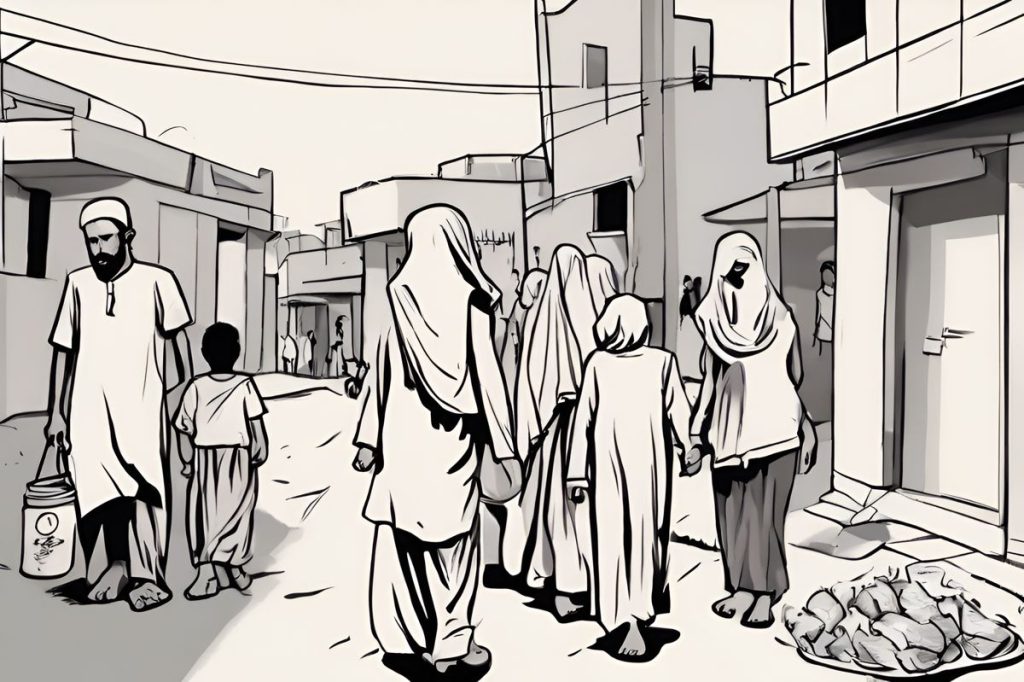The UN-backed IPC report warns of an impending famine in the north of Gaza Strip, expected to strike by May 2024, affecting around 300,000 people. Urgent international intervention is needed as nearly half of Gaza’s population is facing catastrophic hunger levels, highlighting the dire food security situation in the region.
When is famine expected to hit the Gaza Strip?
Famine is expected to hit the north of the Gaza Strip between mid-March and May 2024, impacting around 300,000 people. The UN-backed IPC report warns that nearly half of Gaza’s population is facing catastrophic hunger levels, urging immediate international intervention and support.
Dire Food Security Situation
The north of the Gaza Strip is teetering on the brink of famine, a dire situation unfolding for the 300,000 people caught in the midst of ongoing conflict. A report by the Integrated Food Security Phase Classification (IPC), with the backing of the United Nations, has brought this humanitarian crisis into the spotlight. It paints a grim picture for the immediate future, projecting famine to be imminent between mid-March and May 2024.
Throughout Gaza, the scourge of hunger is broadening its reach. The IPC’s findings indicate that the number of individuals facing catastrophic levels of hunger has surged to approximately 1.1 million, nearly half the enclave’s population. This is a staggering increase that underscores the urgency for international intervention and support.
Escalating Crisis Amid Conflict
For the residents of the Gaza Governorates, the report forecasts a distressing period when famine is expected to become manifest. The conflict has not only stifled access to food but has also severely limited the availability of essential resources and medical supplies, exacerbating the plight of those caught in the crossfires.
The IPC’s warning comes at a time when regional tensions continue to affect the lives of millions. The Gaza Strip has long been a focal point of geopolitical strife, and its population has endured repeated cycles of violence and blockade, leading to severe infrastructural damage and economic stagnation.
Humanitarian Aid Efforts
The international community, including various United Nations agencies, has repeatedly called for the establishment of reliable aid corridors to facilitate the delivery of food supplies and humanitarian relief. Efforts to secure these lifelines are critical to preventing the projected famine and to provide ongoing support for those whose lives are mired in conflict.
Organizations are working around the clock to coordinate aid and allocate resources that can alleviate the immediate suffering. However, the consistent influx of aid is hindered by the volatile security situation, which poses significant challenges to relief operations.
Call to Action
The stark projections underscore the necessity for a concerted global response to the looming famine. Humanitarian organizations and governments worldwide face the daunting task of mobilizing aid and finding sustainable solutions to feed the hungry and prevent a full-scale humanitarian disaster.
The clock is ticking for the international community to respond effectively. As the window narrows before famine becomes a reality in Gaza, the call for action grows ever more urgent, demanding not just immediate relief but also long-term strategies to rebuild and stabilize the region.
When is famine expected to hit the Gaza Strip?
Famine is expected to hit the north of the Gaza Strip between mid-March and May 2024, impacting around 300,000 people. The UN-backed IPC report warns that nearly half of Gaza’s population is facing catastrophic hunger levels, urging immediate international intervention and support.
What is the dire food security situation in the Gaza Strip?
The north of the Gaza Strip is facing an imminent famine, with approximately 1.1 million individuals, nearly half of the enclave’s population, experiencing catastrophic levels of hunger. Urgent international intervention is needed to address the dire food security situation in the region.
How is the ongoing conflict exacerbating the humanitarian crisis in Gaza?
The ongoing conflict in the Gaza Strip has not only limited access to food but has also constrained the availability of essential resources and medical supplies, worsening the plight of those already facing dire hunger. The conflict has contributed to severe infrastructural damage and economic stagnation in the region.
What efforts are being made to address the impending famine in Gaza?
Humanitarian organizations and governments worldwide are working to establish reliable aid corridors to deliver food supplies and humanitarian relief to those in need. However, challenges such as the volatile security situation in the region are hindering the consistent influx of aid, making the need for international support even more critical.

